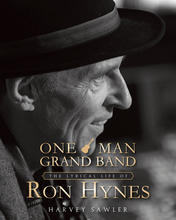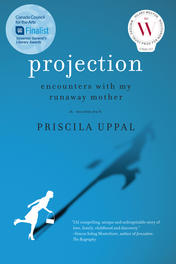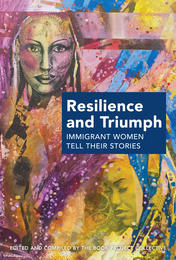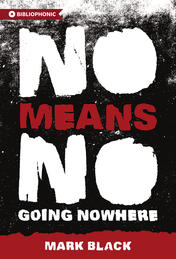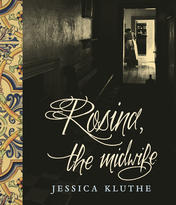Cultural Heritage
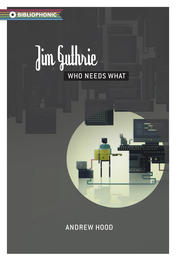
When I bug Aaron Riches for his memories of the young James Edward Guthrie he met at Waverley Drive PS, he laughs: “Jim had the exact same haircut as he does now. He really looked the same. Jim hasn’t changed. I think he was born how he is.
“Of course…” Aaron tempers his amusement some. “Everyone grows.”
Three quarters of what would become Royal City met at this time, at Waverley. Both Aaron and Jim are Guelph-born. Simon Osborne, bassist for that band and player on most of Jim’s albums, moved from Ottawa in Grade 7.
Simon was into skateboarding and made friends that way after relocating. Through a skating friend he heard about this “cool guy from across the street” who had a Vision Psycho Stick and could do kickflips. “So I met Jim,” he remembers, “and he could do the kickflips that were described. And I thought Jim seemed pretty awesome, too.”
The earliest first Jimpression comes from Steve McCuen, childhood chum and collaborator on a hard-to-place project, Mandrills. In “Rap Song 2000,” Steve rhymes his memories of first meeting Jim: “I can remember being back in grade 3 / It’s in September—’82—it’s where I first met Guthrie… He sold his Mite-Y-Mite bike to my younger brother Mike / and told us how to ghost ride the damn bike.”
“I just remember getting huge laughs,” Jim recalls when I ask him about ghost riding, a trick where you leave a moving bike and it continues independent of you. “You did that and everyone’d be on the grass. If you could make a bunch of kids laugh by having skill enough to jump off your bike in such a way that it coasts silently… I was one of those kids who had, like, no confidence, but who had hand-eye coordination.
“And I could throw a rock,” he goes on, “Like, really far. Or straight up in the air and everyone would be like, ‘Holy shit!’ You couldn’t even see it anymore. And it would take 30 seconds to hit the ground. I remember moments like that. Just doing little things that gained immediate [attention].
“Even still… I went to the cottage with a few people [recently] and I pulled out the ol’ rock throwin’ arm, and I still had it. I always attributed it to a good, stout frame. And I have these whippy, elasticy arms. I think there’s a real kind of physics there. I think if you got somebody to measure my body, they’d be like, ‘This is optimal. These are the dimensions you’d use to build one of those David and Goliath slingshots.’
“I made one of those [slingshots], too. When I was younger I used to be really crafty and self-reliant. But the whole while I was trying to choke down a stutter.”
Two years older than Jim, Stephen Evans met Jim on the block. “He was about 12 or 13,” he says. “I think I remember him stammering a lot and being quite shy, but he was also very athletic. He was built like a little gymnast. He was an amazing skateboarder and he was an amazing breakdancer. Well, not an amazing breakdancer, but he spent time learning that stuff. He could moonwalk. I didn’t know anybody who could moonwalk.
“He moves so beautifully, this little man.”
But Stephen stresses that Jim was never a show-off. “I think he just liked devoting himself to learning something and seeing if he could pull it off.”
Jim’s character, like his music, is a unique balance of reservation and razzmatazz. He’s never been someone to trumpet a project, but the work itself, and his dedication to it, has always had such a visible aplomb that drawing attention is inevitable.
To hear it from Jim’s friends, the guy stood out in adolescence; to hear it from Jim, it was the opposite. “When I was younger,” he says, “I didn’t like being the centre of attention because normally, when I was the centre of attention, I was stuttering in front of a class. So I sort of learned being the centre of attention doesn’t always feel good.
“I used to think of myself as a bit of a Seabiscuit,” he says. “In as much as Seabiscuit is sort of a lame horse that nobody wanted. I wasn’t super book smart when I was younger, and I had that stutter, and when I was born my legs were all kinda twisted and turned in. I had to wear casts on my legs for the first little bit of my life. I was always just sorta short and runty. Now that’s all in the past, and I guess it was a big deal at the time. Now, when I put [those issues] under a microscope, they all seem like big little things, a great deal of who I was when I was younger.
“But I learned a lot from those early struggles and it sort of showed me how to adapt and reinvent myself over the years.”
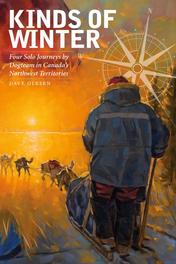
Excerpt from Kinds of Winter: Four Solo Journeys by Dogteam in Canada's Northwest Territories by Dave Olesen
From North
I was getting out there again. We had left the home watershed behind, and the familiar trails leading up it, and the little bastion of coziness at Maufelly Bay. From my journal:
“My world has narrowed to the contents of my sled, these ten dogs, my clothing and the things I always carry in my pockets—”matches, knife, pliers, cord . . . Strip all of it away and I would die almost instantly. The cold and the vastness together would do me in. My caches are miles apart. I creep carefully, cautiously, from one to the next. An odd sensation like vertigo sweeps over me at times, in my mind and the pit of my stomach, and I have to breathe deeply and muster my resolve. The feeling is similar to an unnerving sensation I sometimes conjure up when I am flying the Husky: suddenly I see myself all alone—”the plane and its engine have vanished. It is just me up there, strapped into my tiny chair, suspended a mile or more above the earth. ”
My lead dog Steve had been favouring his right wrist since our midday break just north of Fletcher. In camp that night I heated some Algavyl salve and rubbed it in, then wrapped his wrist and lower leg with a neoprene brace. The pungent smell of the liniment flooded my mind with memories of the Iditarod and the Yukon Quest races. I imagine it did the same for Steve, B. J. , and Murphy, who were the only race veterans in that team of ten dogs. Since we were not racing, I was free to treat Steve with aspirin, and I gave him a coated 325 milligram tablet. By the next morning he was still favouring the wrist slightly, but he was putting a little weight on it again.
Taken together, Steve’s bum wrist and the weather seemed to call for a rest day. It was day six of the trip and we were about a hundred miles out from home. In my journal I recorded the morning weather, and although it looked harmless enough when written down, there was something about it I did not trust: minus 20 degrees, very light snow, visibility four or five miles, the sky overcast at about 400 feet, and a light breeze from the east. I had no barometer, but I guessed that the pressure was rapidly falling. Something was going to happen.
From West
The book will not be “it” anyway. “It” is the trips themselves, and my belief in the importance of them. “It” is Robert Lake, the Noman portage, 46 below at the Thelon cache, frozen dog dicks and frozen toes, the surprise of a mild February day way up on the Back River, our arrival at Moraine Point . . . “It” is the country deep down, felt and seen and slept with, mile by mile, by dogtrot and snowshoe step. The landscape is a part of me now in a way that it was not a part of me four years ago. “It” is that visceral connection, beyond the realm of language.
Lines of caribou trails in snow dropped down from the steep prow of Gibraltar Point; “More a place for mountain goats than caribou,” I remarked to the dogs. We had not crossed a caribou track since our passage down McLeod Bay on that first evening of the trip. By late afternoon we had picked up the traces of our outbound trail from that first night’s run. The dogs clearly knew we were coming into the home stretch. A few hundred yards ahead of the lead dogs a wolverine loped across the ice, making as close to a flat-out sprint for safety as a wolverine can muster. We were no threat to it, but Spruce was eager to veer off and give chase. The long patch of glare ice abeam Shelter Point was still polished smooth. Ernie, the only dog in the team who was wearing booties that day, started to slip and skid wildly. I stopped and took his booties off, giving him back the use of his toenails for traction. “Feet heal faster than shoulders,” as old Ray Gordon had once reminded me during a race.
That evening, rolling down the shore between Shelter Bay and Sentinel Point, the day’s mild air gradually cooled as the shadow of the high cliffs fell over us. With the dogs still moving gracefully, almost effortlessly, a light north breeze puffing up, caribou and wolf tracks here and there . . . I wanted it never to end. A voice in my mind asked,”Please can I just do this—”this right now—forever? And never have to submit an amendment to an airplane maintenance schedule or pay my bills or buy groceries or consider what I am going to do when I am old and can’t do this anymore? Can’t we just run and run and then, in one perfect moment, like Mallory on the shoulder of Everest, just vanish forever into this cold clean air?“ Long pause. “Nope. You can’t. You have to go in. Hell, let’s face it Olesen, you want to go in. “
